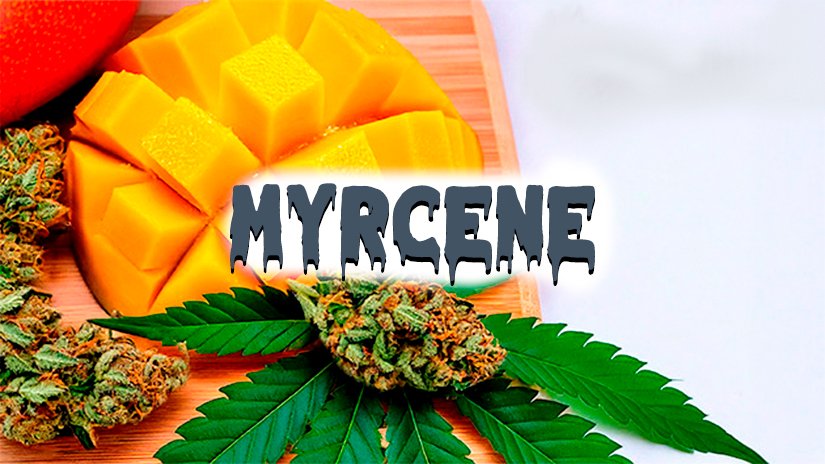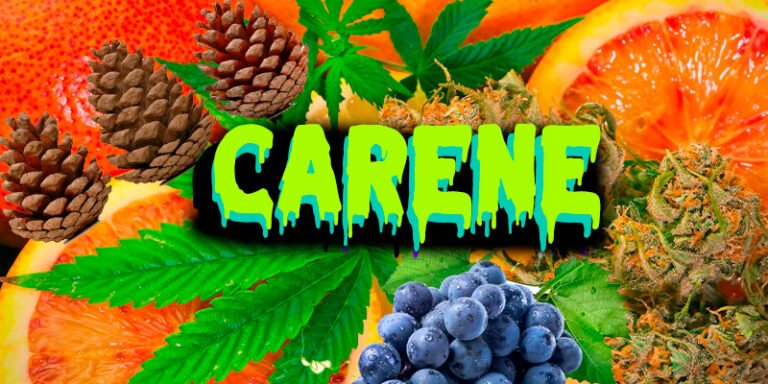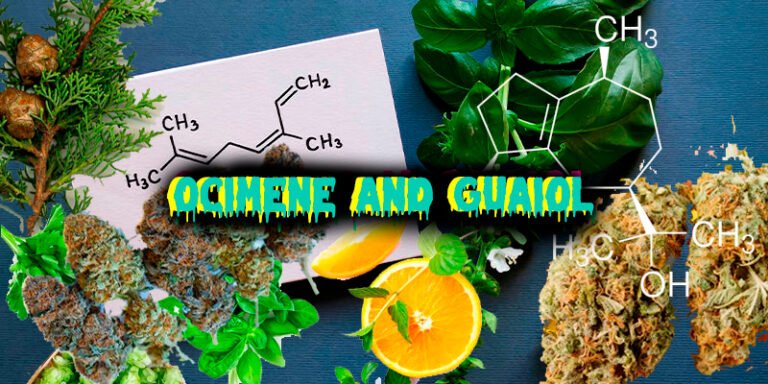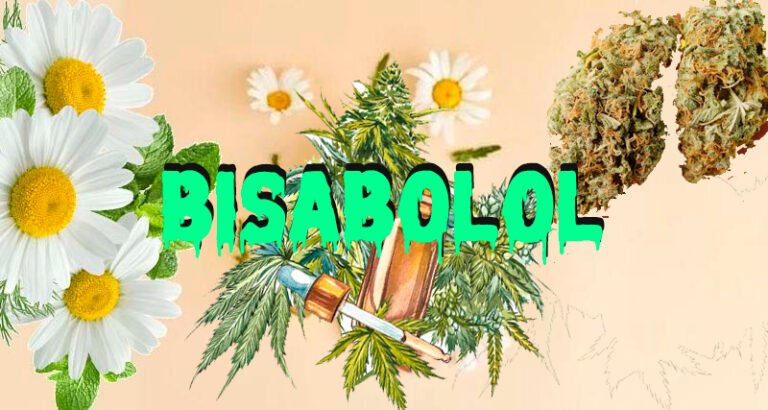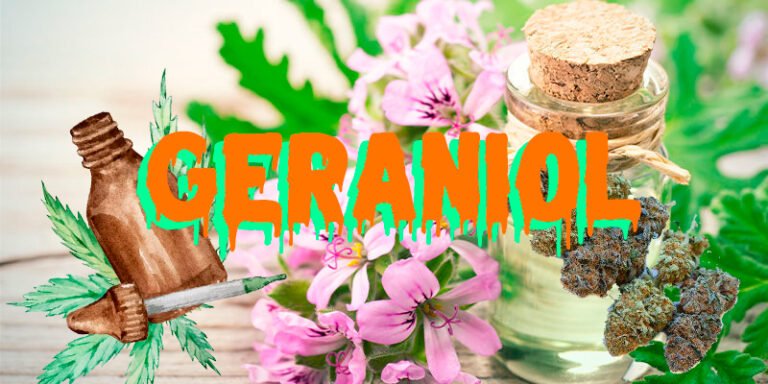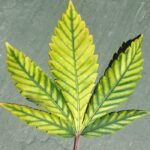Cannabis plants produce approximately 150 different terpenes, of which Myrcene is one of the most abundant. This compound contributes a relaxing effect and a musky, fruity flavor to certain strains.

The Chemistry of Myrcene
Each Terpene is like a puzzle made up of smaller individual pieces called Isoprene (hydrocarbon chains of five carbons). Terpenes are classified into several different groups based on the number of hydrocarbon chains they comprise. Myrcene is the smallest cannabis Terpene, containing only two isoprene units and, therefore, a total of ten carbon atoms. This structure places Myrcene in the chemical group of monoterpenes, along with Limonene, Terpinolene, Linalool, and Pinene. These simple molecules are some of the most prevalent Terpenes in the vast majority of cannabis strains.
With a molecular weight of 136.23 g/mol, Myrcene is volatile in nature, meaning it can easily evaporate at room temperature. As a result, strains containing high levels of this compound are especially aromatic during flowering.
There are two different isomers of Myrcene: α-Myrcene and β-Myrcene. These two compounds share the same molecular formula with different structural arrangements. Between α- and β- isomers, the last one is associated with the couch-lock effect of many marijuana strains.
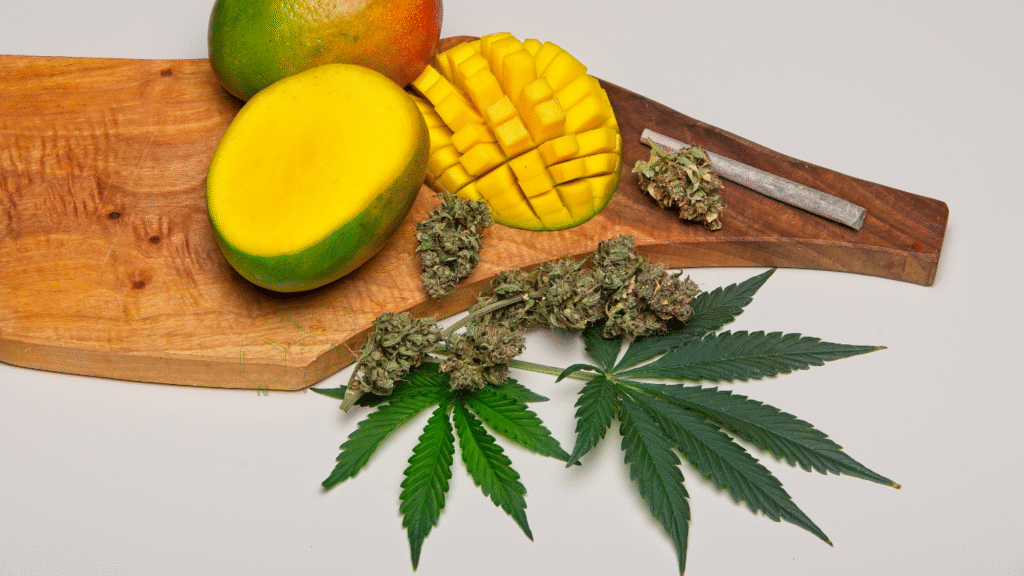
Myrcene and the Entourage Effect
In the past cannabinoids such as THC and CBD were considered the only ones responsible for the effects of different marijuana strains. Furthermore, it was believed that the Indica/Sativa dichotomy determined whether a particular strain produced energizing or relaxing effects. However, advances in cannabis science have shown that this is not the case. The current concept of chemovars and chemotypes classifies the effects of cannabis strains based on their cannabinoid and terpene content.
Furthermore, the entourage effect theory suggests that terpenes play a fundamental role in shaping the effects of each chemovar and may act synergistically with cannabinoids to amplify their effects.
While some Terpenes such as Humulene and Limonene directly activate the endocannabinoid system (a system that reacts to THC and other cannabinoids), Myrcene acts different.
Researches at Otago University of New Zealand tested various cannabis Terpenes to see if they could activate the endocannabinoid system. In this study, Myrcene showed no activity on the CB1 and CB2 receptors, suggesting a lack of synergy. Another study conducted at Dalhousie University of Canada, showed evidence of the Myrcene entourage effect by administering this molecule along with CBD to mice with chronic arthritis; although the researchers observed reductions in markers associated with pain and inflammation; they found no evidence of a synergistic effect.
Myrcene does not influence the clasiical endocannabinoid system, but may work side by side with cannabinoids in a indirect way. For example, this terpene acts on the α2 adrenergic receptor, a receptor associated with the function of the endocannabinoid system in the brain. By binding to this receptor, Myrcene stimulates the release of endorphins, which may act in conjunction with cannabinoids like THC to combat pain.
Myrcene also influences the extended endocannabinoid system (also called the endocannabinoidome). While CB1 and CB2 receptors make up the classical endocannabinoid system, the endocannabinoidome consists of about 20 receptors. Among them, Myrcene binds to the TRPV1 receptor, as do the cannabinoids CBD and CBG. This activity opens up the possibility of synergistic action between these compounds and other cannabinoids and Terpenes.

Where is Myrcene found?
Myrcene isn’t only present in cannabis flowers. This Terpene is found throughout the plant kingdom, including some of the most widely consumed fruits, herbs, and spices. Among the plants with the highest levels of Myrcene are hops, mango, thyme, and basil. In marijuana, Myrcene is produced in trichomes, which secrete it in the form of a viscous resin, along with many other Terpenes and cannabinoids.
Myrcene Fragance and Flavor
Myrcene contributes very pleasant aromas to certain cannabis strains. At the end of flowering and after harvest, these buds release aromas of musk, earth, fruit, and hints of clove.
Talking about the flavor; a smoke from a strain rich in Myrcene offers hints of musk, herbs, and spices.
Myrcene Effects
Myrcene produces relaxing effects. The relaxing and calming effect of this Terpene was mistakenly attributed to the indica genetics of a certain marijuana strain. Myrcene-rich strains provide a strong efect in the body that makes the eyes red and makes you very hungry.
Although there are many scientific studies on how Myrcene works in the body, most of the evidence comes from cellular and animal models that provide clues as to how it might work in the human body. However, many marijuana users report feeling a deep physical relaxation after consuming varieties rich in Myrcene.



